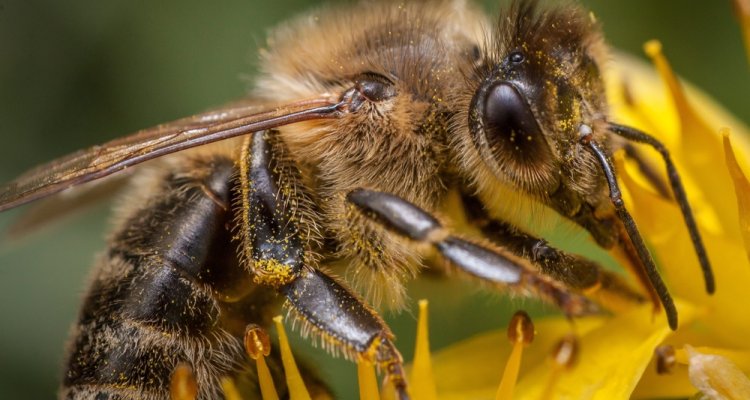In Search of Pure Colonies: Preserving the Endangered European Dark Bee
The Netherlands has only one species of native honeybee: the European dark bee which is found on Texel, among other places. This bee species is sharply declining in numbers. To ensure a healthy future population, the Centre for Genetic Resources, the Netherlands (CGN) is researching ways to secure genetic material.
The European dark bee (Apus mellifera mellifera) is a subspecies of the European honeybee (A. mellifera), which is native to northwestern Europe. Experts and bee enthusiasts are concerned about the dark bee, because there are fewer and fewer pure populations. One reason is that they interbreed with other subspecies. Currently, the only protected area for A. m. mellifera in the Netherlands with pure populations is the island of Texel.
Furthermore, beekeepers also import honeybees from abroad, because they are easier to keep and give higher honey production. The imported bees may eventually displace native bees. If the population of dark bees becomes smaller, it may affect plant pollination, thus affecting biodiversity. A large number of plants in nature depend on pollination by the dark bee.
Inventory: which populations are the purest?
In 2023, a literature review was commissioned by the CGN and interviews were conducted with various stakeholders. This involved both experts from the field and scientists in the area of A. m. mellifera. It concluded that a study should be initiated to analyse the genetic diversity and degree of hybridisation of the dark bee in the Netherlands. Once it is clear what characterises a ‘pure’ dark bee, the CGN can use this study to identify the most pure and genetically diverse colonies. Semen from the drones (male bees) of these colonies can then be collected and stored.
Annemieke Rattink, CGN cluster leader Animal Genetic Resources, explains: “CGN will use the results of the analyses to work with beekeepers to extract semen that is representative of current diversity. The stored genetic material can then be used to restore populations. Ultimately, we hope that the expanded knowledge about the European dark bee will result in a healthier and more resilient population.”

